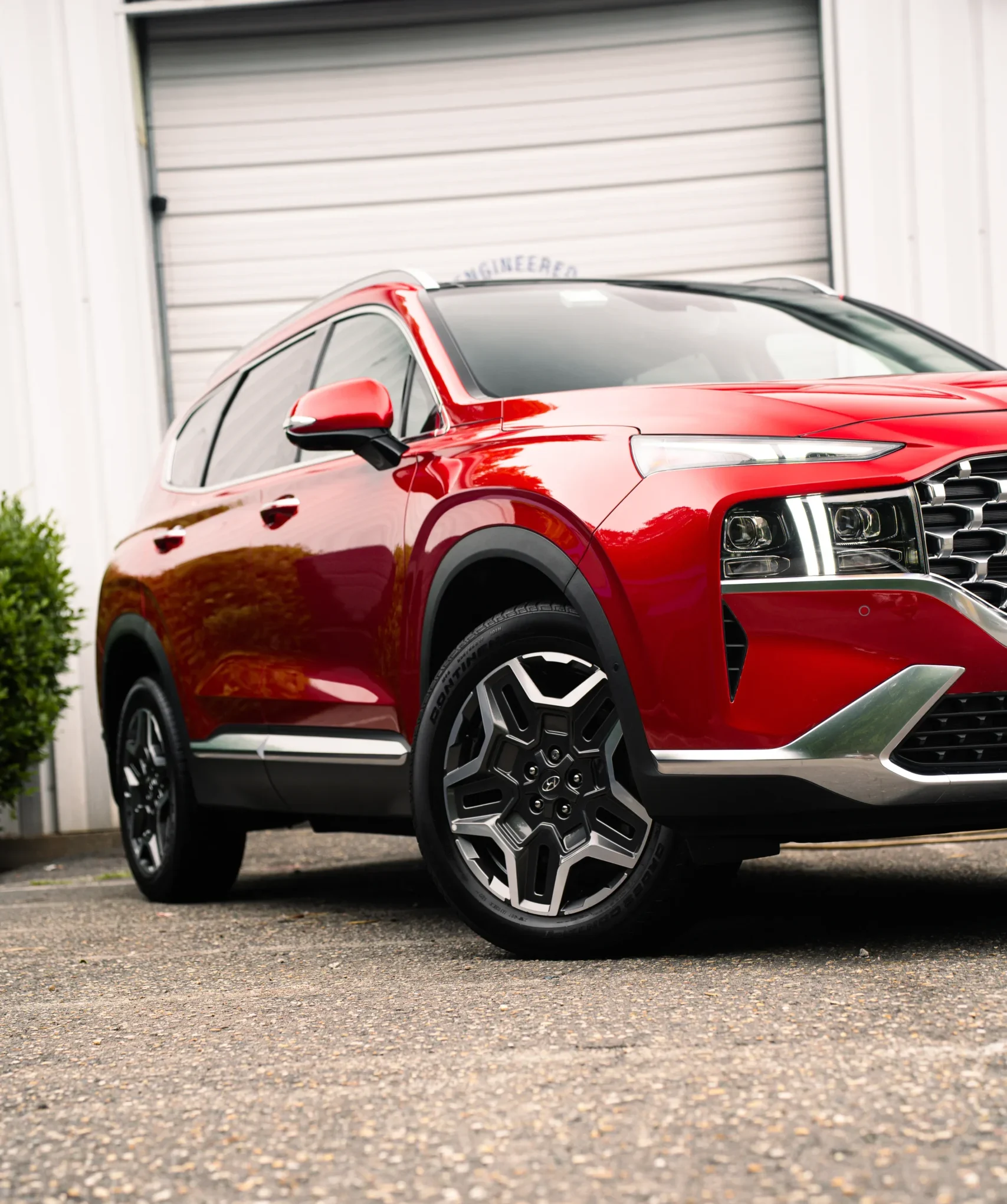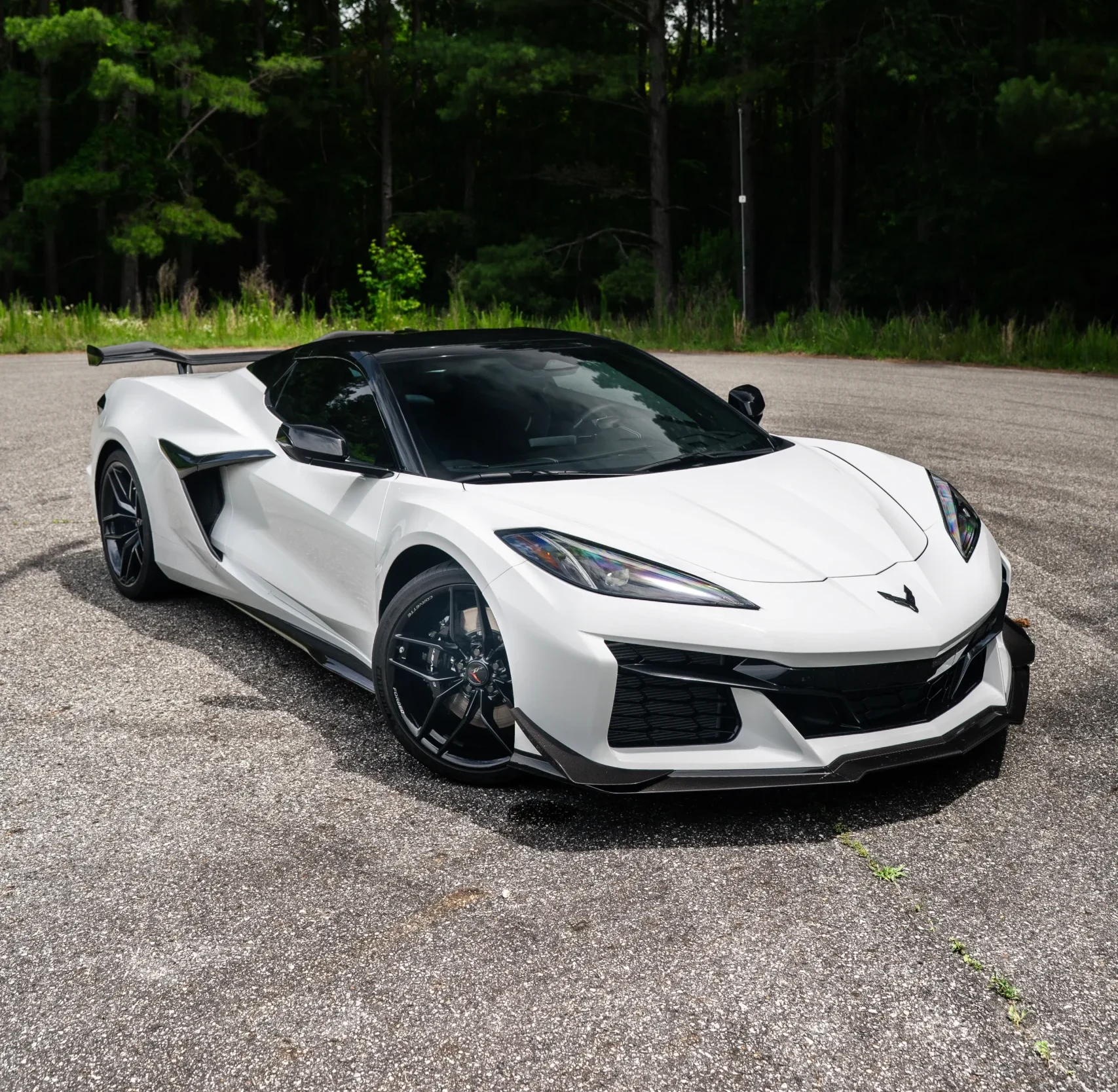Ceramic Coating in Williamsburg, VA
Ceramic coating in Williamsburg, VA provides long-lasting shine and protection for vehicles driven through historic districts, suburban communities, and river-access recreation areas. I Shine For You Auto Detailing applies professional coatings that make washing easier and help resist contaminants, ideal for residents who enjoy road trips, local dining, and outdoor activities.
Superior Protection for Your Vehicle's Paint
The roads and environment expose your car to countless threats, from UV rays to harsh chemicals. With our ceramic coating service, you’ll get a powerful barrier that protects your vehicle’s paintwork from daily wear and tear. Here’s how ceramic coating safeguards your car:
- UV Protection The sun's ultraviolet rays can cause oxidation, fading, and peeling. Our ceramic coating forms a protective shield that prevents sun damage, keeping your car’s paint vibrant and fresh.
- Chemical Resistance Acidic contaminants such as bird droppings, tree sap, and bug splatter can etch into your car’s paint if not removed promptly. Ceramic coating acts as a chemical-resistant barrier, minimizing damage and making cleanup easier.
- Scratch and Swirl Mark Defense While not bulletproof, ceramic coatings provide a layer of defense against minor scratches and swirl marks caused by improper washing or road debris.
- Corrosion Prevention Ceramic coating resists water and salts, which can lead to rust over time. It’s an essential investment, especially in areas with high humidity or frequent exposure to road salt.
By choosing ceramic coating, you’re not just maintaining your car’s beauty—you’re actively protecting its value.
Expert Ceramic Coating Application
At I Shine For You Auto Detailing, we prioritize precision and quality in every ceramic coating application. Here’s a breakdown of our step-by-step process:
Thorough Cleaning
Before any coating is applied, we meticulously clean your vehicle to remove dirt, grease, and contaminants. A spotless surface ensures the ceramic coating adheres perfectly, maximizing its effectiveness.
Paint Correction
If your car’s paint has imperfections such as swirl marks, scratches, or oxidation, our team performs professional paint correction. This step ensures the coating bonds to a flawless surface, enhancing the final result.
Ceramic Coating Application
Using high-quality ceramic products, we apply the coating evenly across the vehicle’s exterior. This process requires skill and patience to ensure complete and uniform coverage.
Curing and Inspection
After application, the coating undergoes a curing process to bond effectively with the paint. Once cured, we conduct a detailed inspection to ensure every inch of your vehicle meets our high standards.
Keep Your Car Looking New and Glossy
Imagine your car gleaming like it just rolled off the showroom floor—every day. That’s the power of ceramic coating. Here’s why it’s the ultimate solution for maintaining your car’s luster:
- Hydrophobic Properties
Ceramic coatings are water-repellent, causing water to bead up and slide off effortlessly. As water rolls away, it takes dirt, grime, and other contaminants with it, keeping your car cleaner for longer. - Effortless Maintenance
The slick surface created by ceramic coating significantly reduces the time and effort required to clean your car. Dirt doesn’t stick as easily, and washing becomes a breeze. - Enhanced Gloss and Shine
Ceramic coatings amplify your car’s natural color, creating a deep, mirror-like shine. Whether you own a classic car, luxury sedan, or sporty SUV, ceramic coating brings out the best in its appearance. - Resists Environmental Damage
From pollen and dust to industrial fallout, ceramic coating shields your car from everyday environmental hazards. This keeps your vehicle looking newer for longer.

Trusted Ceramic Coating Services in Williamsburg
When it comes to protecting your vehicle, you need a team you can rely on. At I Shine For You Auto Detailing, we’ve earned our reputation as a trusted provider of ceramic coating services in Williamsburg. Here’s what sets us apart:
- Years of Experience
Our technicians bring expertise and attention to detail to every project, ensuring your vehicle receives the highest level of care. - Premium Products
We use only the best ceramic coatings on the market, delivering long-lasting results you can count on. - Customer-Focused Service
Your satisfaction is our priority. We take the time to understand your needs and deliver a service that exceeds expectations. - Local Reputation
As a business rooted in Williamsburg, VA, we’re proud to serve our community with honest, high-quality auto detailing services.


Enhance Your Vehicle’s Durability with Ceramic Coating
Investing in ceramic coating isn’t just about aesthetics—it’s about durability and cost-effectiveness. Here’s why ceramic coating is a smart choice for vehicle owners:
Long-Term Protection
Ceramic coating creates a semi-permanent layer that lasts for years, unlike traditional waxes or sealants that wear off quickly. This ensures your vehicle remains protected over time with minimal reapplications.
Saves Money
By reducing the need for frequent waxing, paint correction, or touch-ups, ceramic coating pays for itself in the long run. You’ll spend less on maintenance while preserving your car’s value.
Preserves Resale Value
A well-maintained exterior can significantly boost your vehicle’s resale value. Buyers are more likely to invest in a car that looks pristine, giving you an edge when it’s time to sell.
Ideal for All Seasons
From summer heat to winter road salt, ceramic coating is designed to withstand diverse weather conditions, providing year-round protection for your car.
Why Choose Us for Ceramic Coating?
There are plenty of options for auto detailing services, but I Shine For You Auto Detailing stands out. Here’s why Williamsburg residents trust us:
Attention to Detail
At I Shine For You Auto Detailing, every car receives meticulous care. We treat your vehicle as our own, ensuring thorough attention to every corner for flawless, polished results.
Customized Solutions
From compact sedans to luxury SUVs and classic cars, we customize ceramic coating services to meet your vehicle’s specific needs, ensuring tailored protection, stunning appearance, and unmatched durability.
Transparent Pricing
Our pricing is clear and upfront, with no hidden fees or surprises. You’ll always know the exact cost, giving you confidence and peace of mind before we start.
Flexible Scheduling
We prioritize convenience, offering flexible scheduling options that accommodate your busy lifestyle. Whether weekends or evenings work best, we make ceramic coating services fit seamlessly into your routine.
Fill The Form Below To Get Started
Book Your Ceramic Coating Service Today
Your car deserves the best, and at I Shine For You Auto Detailing, we’re here to provide it. Protect your investment, enhance your car’s appearance, and enjoy the benefits of low-maintenance upkeep with our expert ceramic coating services.
Don’t wait—schedule your ceramic coating service in Williamsburg, VA, today. We also offer Paint Protection Film (PPF) Services in Williamsburg, VA. Contact us to book an appointment or learn more about how we can transform your vehicle.
(757) 378-2844
5691 Mooretown Rd Williamsburg, Va 23188
Follow Us
EXCELLENTTrustindex verifies that the original source of the review is Google. Great, easy experience. Got my car detailed and it looks brand new! Staff was very nice and had excellent customer service. I definitely recommend this place!Posted onTrustindex verifies that the original source of the review is Google. Kenya, the owner, is very customer service oriented. I am a repeat customer, and I am always pleased with the work quality.Posted onTrustindex verifies that the original source of the review is Google. They do great work at this establishment. The owner is very personable and makes sure the job is done right. They are customer oriented and once you have their service you will become a repeat customer. I recommend giving them a shot if your in any of the surrounding cities.Posted onTrustindex verifies that the original source of the review is Google. Great job with the ceramic tint on my car! 5 stars all day long!Posted onTrustindex verifies that the original source of the review is Google. Professional, fast, and very fair pricing! I'm pleased with their results and will be back!Posted onTrustindex verifies that the original source of the review is Google. Very happy with the expel paint protection film I had placed on my Camaro. Job was done on time. Paid attention to detail and protected my front end as I wished it would be done. Excellent business to trust your vehicle with. I was referred to this business by my house. Painter, who had his truck done by them. Definitely a great referralPosted onTrustindex verifies that the original source of the review is Google. iShine gave me everything I wanted and more. Had my nissan wrapped for my daughter sweet sixteen birthday. She loves it. iShine was very professional and provided great service. The quality of work, was perfect....Posted onTrustindex verifies that the original source of the review is Google. Great small business, great detail, great everything. Thanks for taking care of my GLK....highly recommend these guys.Posted onTrustindex verifies that the original source of the review is Google. My New Beetle is 22 years old and whilst I have tried to keep her clean the detailing provided by IShine made her look like new! The exterior shined and the leather seats were so clean they looked like a wonderful new color. I could not be happier and I thank everyone at iShine for the rapid, expert, caring & pristine work. I highly recommend iShine!Verified by TrustindexTrustindex verified badge is the Universal Symbol of Trust. Only the greatest companies can get the verified badge who has a review score above 4.5, based on customer reviews over the past 12 months. Read more
Frequently Asked Questions About Ceramic Coating
